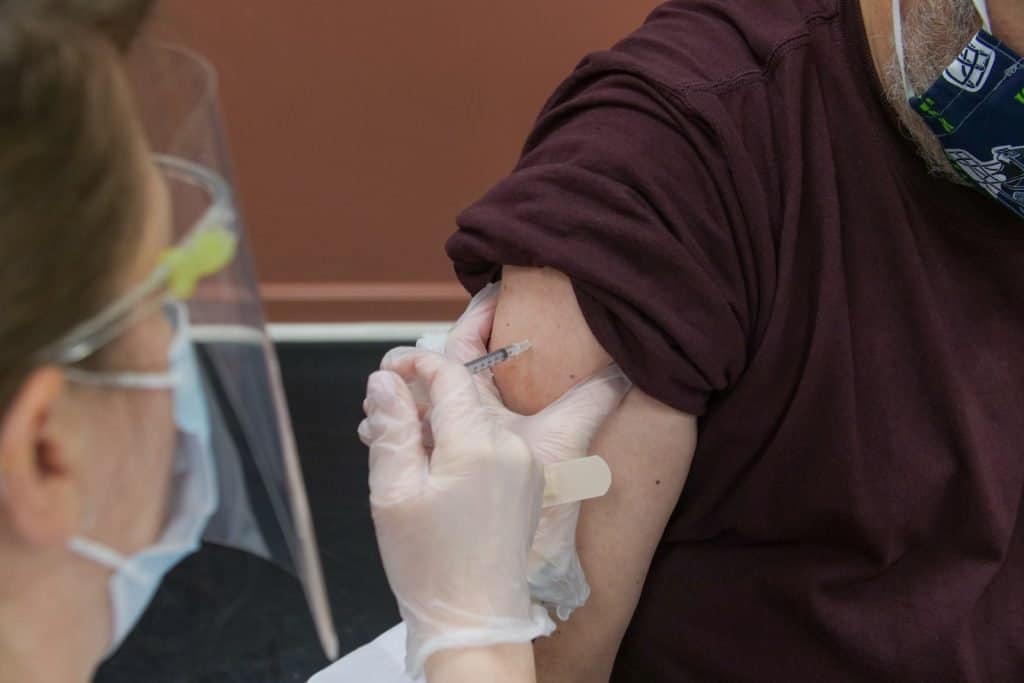Geolocation software has far more utility than simply locating your favorite restaurant or directing you to a friend’s house. It can also be used in crisis situations where complex location data must be easily organized and distributed on a mass scale.
One such instance was during the Covid-19 pandemic when crucial information about virus impact and vaccine availability needed to be made accessible to the public. Geolocation software played a major role in the pandemic, providing the public with up-to-date information about when and where they could find the vaccine. Here is a closer look at how this innovative technology helped in the efforts to vaccinate the US.
Finding Those in Need
One of the biggest challenges of distributing the vaccine was ensuring that shipments made it to the locations where they would be accessible to those in need. One of the early goals of the initiative was to make the vaccine available to the most vulnerable populations first, including the elderly and front-line workers.
This created a variety of logistical problems for vaccine distributors who needed to know where these vulnerable populations were located and how to best serve them.
Geolocation software was crucial in enabling the vaccine rollout to go according to plan. Utilizing big data from the healthcare industry alongside powerful geolocation platforms, distributors were able to identify communities in need and develop a system that made vaccines available to any at-risk groups.
Tracking Shipments
Another major hurdle was tracking shipments and ensuring that this data was communicated effectively to the public. Geolocation software such as Microsoft’s Maps API helped to create powerful technology that kept the public abreast of when shipments would be arriving at a location nearby.
Using Bing Maps COVID-19 tracker, users could easily find out when shipments were going out and where to find the closest vaccine center. Plus, they could also access up-to-date news on the spread of the virus, as well as essential information on clinical research behind the vaccines. This information proved to be crucial in ensuring that the public was educated and aware of the progress of vaccine shipments everywhere.
Storing the Vaccine
Tracking shipments is not useful for those being vaccinated, they just need to know when they can get an appointment. Healthcare providers and those producing the vaccine needed a way to track shipments and make sure they were stored with care so that they could schedule appointments in the window between when the vaccines arrived safely and before they would expire. Vaccine temperature monitoring is essential to ensuring that the medication is safe and effective. Vaccines must be stored at a certain temperature and kept away from intense humidity or pressure to remain viable.
Geolocation software helped producers locate facilities and equipment capable of storing the vaccine while it was being administered to the public. This was no easy feat, given the lack of resources that healthcare providers were dealing with at the beginning of the pandemic. But using geolocation software, distributors were able to safely store and transport the vaccine until it could be made available to the public.
Visualizing the Data
During the height of the pandemic, it was crucial for the public to have up-to-date visuals showing how the vaccine was spreading and where the major hot spots were located. Geolocation software played a major role in tracking this data and generating interactive charts and graphs that made the information easy to visualize.
Microsoft’s COVID-19 tracker, for instance, allows users to see statistics on the number of new cases across the world and where they are most concentrated. It also keeps a running tab on the number of vaccine doses administered worldwide and the percentage of the population that is fully vaccinated.
Data visualization is essential for ensuring that the public can understand all the information that is coming at them. Throughout the course of the pandemic, there were so many facts and statistics being put forward that it could be quite difficult for the average person to wrap their head around exactly what was going on.
Technology like the COVID-19 tracker made it simpler for people to understand the data being presented to them and make rational and informed decisions about their safety and healthcare. This proved crucial in helping vaccinate a large percentage of the population.
How Tech Partnerships Played a Role
Like any other great innovation, the widespread distribution of the COVID-19 vaccine was not the work of one group or technology sector. It was made possible by an array of tech partnerships that enabled the rollout of a brand-new vaccine at unprecedented speeds.
The effort was made possible through a collaboration between the technology and healthcare industries. For instance, Microsoft’s Consulting Services has deployed over 230 emergency COVID-19 responsive missions to help aid in the effort to distribute the vaccine safely and equitably.
Among these initiatives is Microsoft Vaccine Management, which utilizes the suite of tools at the company’s disposal, including their powerful Maps API, to aid healthcare providers in administering the vaccine and scaling to meet demand.
While the front-line workers were the unsung heroes of the pandemic, they also needed the help of cutting-edge technology to ensure that the vaccine was administered quickly, safely, and efficiently. Geolocation software, among other crucial innovations, played a significant role in ensuring that the public had access to essential data about the spread of the virus and could access the vaccine as soon as it became available.





